
When you look up at the large, towering Abelam bark painting in our exhibition Connecting Cultures, you wouldn’t guess that it had been bedridden for…
Read More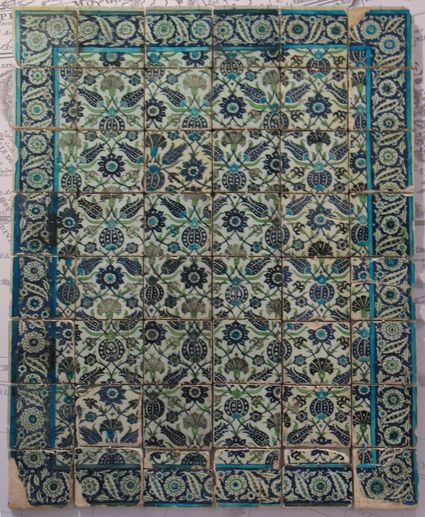
If you’ve been through Connecting Cultures, you’ve probably wondered at the number of diverse objects. You may not be aware, however, of the planning and…
Read More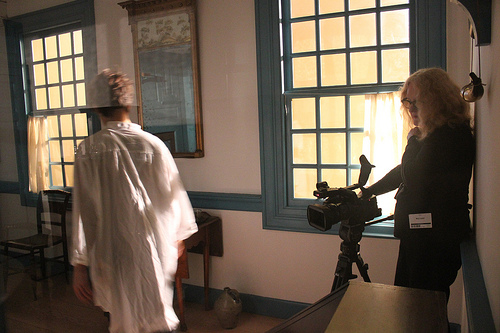
In the exhibition Playing House four artists, Betty Woodman, Ann Chu, Ann Agee and Mary Lucier, install their own artwork into and around several period rooms…
Read More
In preparation for the paper rotation that recently went on view in our second floor, the works were examined and, if necessary, stabilized before going…
Read More
In preparation for the exhibition Sanford Biggers: Sweet Funk—An Introspective, conservators took part in preparing and installing Blossom, 2010, a recent acquisition to the collection….
Read More
Repairing papyrus can be a little like putting a jigsaw puzzle together. In order to make sense of the many small pieces at hand, we…
Read More
Yes folks. The quake was felt here at the Brooklyn Museum. Unlike our colleagues in California, Tennessee and even Indianapolis, we Brooklynites do not live…
Read More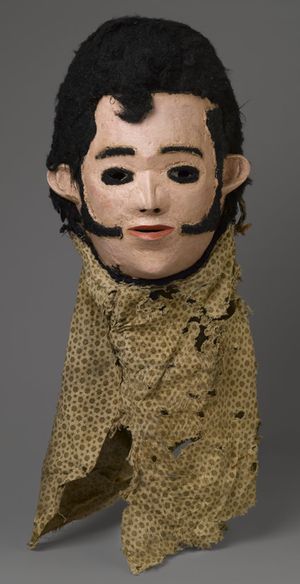
Elvis is at the Brooklyn Museum and not where you’d expect to find him—in the new installation of the Museum’s African galleries, African Innovations. Brooklyn’s…
Read More
With the initiation of the project Split Second, Joan Cummins, Curator of Asian Art selected a very large number (185) of works from the Museum’s…
Read More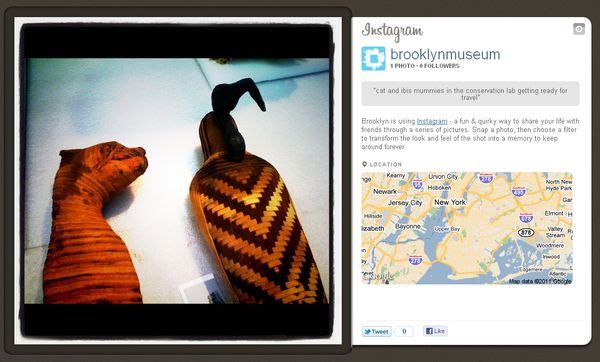
If you read Lisa’s post on the animal mummy field trip to the Animal Medical Center and got as excited as we did, follow us…
Read More
These past few weeks we have been steadily packing and preparing to transport a group of animal mummies to the Animal Medical Center (AMC) for…
Read More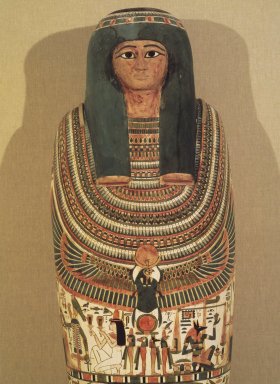
Yesterday, a team of curators, conservators, and art packers and handlers took the last of our human mummies to North Shore University Hospital to be…
Read More
Our research to further understand the Book of the Dead of the Goldworker Amun, Sobekmose continues. Carbon-14 (C-14) dating was one of the first scientific…
Read More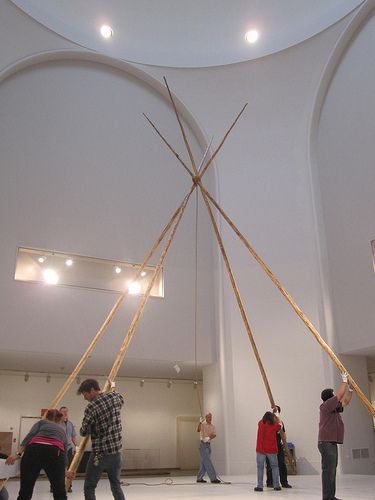
That’s exactly the question we were asking ourselves when Nancy Rosoff and Susan Kennedy Zeller organizing Curators for Tipi: Heritage of the Great Plains put…
Read More
Another scientific analytical technique commonly used in art conservation is called Fourier-transform Infrared Spectroscopy, or FTIR. The Brooklyn Museum’s Paper Conservation Lab employed this technique…
Read More
One of the many scientific analytical techniques used in art conservation is called X-ray Fluorescence Spectroscopy, or XRF. The Paper Conservation Lab here at the…
Read More
Following Rachel’s previous discussion on pigments and inks used in our Book of the Dead of the Goldworker of Amun, Sobekmose, I will begin here…
Read More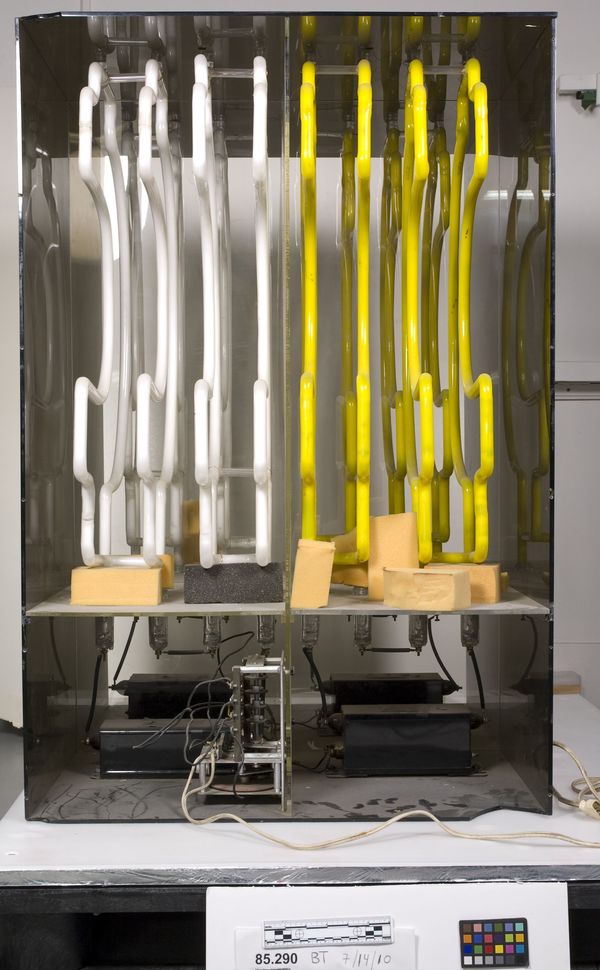
When I first saw Chryssa’s neon sculpture in storage in late 2004, the object was in an unexhibitable state, missing the two end pieces of the…
Read MoreThis is the third blog post on the Museum’s extraordinary New Kingdom papyrus, the Book of the Dead of the Goldworker Amun, Sobekmose. My colleagues…
Read MoreOnce a papyrus sheet was formed it was joined together with other sheets to form long rolls. The papyrus roll format dates back to ~3,000…
Read MoreBefore we began treatment on the Book of the Dead of the Goldworker of Amun, Sobekmose papyrus scroll, the staff of the paper conservation lab…
Read MoreAlthough the making of papyrus as a writing support is almost 5,000 years old, not a single written description by the Egyptians exist to explain…
Read MoreTo the ancient Egyptians, magic (heqa in ancient Egyptian) was a potent force that could be used by deities and humans to influence the mortal…
Read MoreIf you were following us on Twitter last June, you probably remember us live tweeting as a group of mummies were taken to North Shore…
Read MoreStarting on December 2nd, that’s exactly what you’ll be able to do in the Museum’s Fourth Floor Schenck Gallery—in a handcrafted replica of our 17th-century,…
Read MoreTo those of you who are regular readers to this blog, you may remember my colleague, Jakki Godfrey’s post from May 27 detailing the deinstallation…
Read MoreThose of you who are 1stfans got an introduction to the animal mummy research project being done at the Museum when we held an informal…
Read MoreThrough the generosity of Beth Rudin DeWoody, the Museum recently acquired a multiple component installation piece made by the artist Vadis Turner, which will be…
Read MoreWhat is the Brooklyn Museum’s important Arshile Gorky lithograph doing outdoors? And why is it immersed in water? I received these questions many times from…
Read MoreIt should not be so hard to tell a woman from a man. Yet three of the five male mummies from the Brooklyn Museum that…
Read MoreAs some of you may have seen from the recent press coverage, we took four of our Egyptian human mummies to North Shore University Hospital…
Read MoreWe’ve got something very cool going on! Follow us on Twitter today to get our updates—we are going to be tweeting live as curators and…
Read MoreIn preparation for renovation to the glass corridor roof, two of the museum’s exterior architectural elements, a stone dragon and a zinc lion, needed to…
Read MoreThothirdes may be familiar to those of you who have seen her on display in the 3rd floor Egyptian Galleries. She was deinstalled and brought…
Read MoreIn addition to continuing to x-ray the animal mummies, the Conservation Lab has started preparing to send several human mummies to North Shore University Hospital….
Read MoreHave you ever had one of those days where everything falls into place? When Eugenie Tsai blogged about Valerie Hegarty’s Fallen Bierstadt back in October,…
Read MoreDuring this past week I continued to treat small finds excavated from the west side of the Taharqa gate, and to watch the progress…
Read MoreI’ve been back on site for a week now and am happy to rejoin the team for my second season. It’s great to see Richard,…
Read MoreThis past Saturday as part of programming for 1stfans at the Brooklyn Museum, I gave a presentation on the animal mummy research the Conservation Department…
Read More“To Live Forever” is finally up at the Indianapolis Museum of Art, and they have done an amazing job posting a wealth of information on…
Read MoreI’m back from leave, and during the last several months we’ve been busily getting all of the objects ready for the “To Live Forever, Egyptian…
Read MoreThe next time you enter the Grand Lobby of the museum, make sure you cast your eyes upwards. In one of the openings in the…
Read MorePhoto by Adam Husted Sorry for the delay in this post, but it was a long process organizing the CT scans. When we unpacked Demetrios,…
Read MoreSlideshow created with Admarket’s flickrSLiDR. Having trouble seeing the slideshow? Photos are also on Flickr. These slides show the Jan Martense Schenck House as it…
Read MoreIn my previous post, I discussed how an adhesive introduced with an ultrasonic mister can be used to stabilize paint layers. Now you can see…
Read MoreIn preparation for the Museum’s current exhibition, Brushed With Light, conservators in the Paper Conservation Department examined over ninety watercolors. It was great to work…
Read MoreWhile Marc was visiting us from the Getty to carry out XRF on our mummy Demetrios, we decided to give Marc a sample of the…
Read MoreOn July 5, Marc Walton, a scientist with the Getty Conservation Institute came to examine one of our mummies, knows as Demetrios. He brought a…
Read MoreOver a few days each summer the object conservators and the conservation summer interns get to venture out to the sculpture garden to treat the…
Read MoreI would like to introduce you to Demetrios. Demetrios is a mummy in the Brooklyn Museum collection that will be traveling across the country…
Read MoreQ: What does it take to install the Period Rooms? A: A whole lot of people! In future posts, we’ll describe how the Schenck House…
Read MoreThe Jan Martense Schenck House is scheduled to re-open to the public in July. It has moved from its original location on the 4th floor…
Read MoreAs we install our upcoming exhibition Pharaohs, Queens, and Goddesses, the Museum’s conservation team has been working on several of the objects that will be…
Read MoreLisa is on vacation this week, so I’ll be updating the blog in her absence. We apologize to everyone who came out to see our…
Read MoreThe primer is complete. See the video! It is too humid today to apply the topcoat, and thundershowers are expected later this evening. Tomorrow is…
Read MoreThe painting continues. The sculpture has approximately 250 square feet of surface to paint. The progress is good. The winds are less strong today and…
Read MoreNow that the repairs to the metal skin are complete, the team from UHP Projects. Inc. (Ultra High Pressure Projects) is back and have started…
Read MoreMany of the multiple layers of failing paint found on the statue contained heavy metals, such as lead, which was a common ingredient in paint…
Read MoreLisa has been giving you a wonderful overview of the on going process. I will confine myself to details specific to the work. Works of…
Read MoreThe repairs to the skin are working. The newly galvanized steel patches are riveted, and then welded in place. It’s not raining today, enabling the…
Read MoreIt is not fun working in the rain. The team from Conservation Solutions continue the work on the statue, despite the numerous, and often heavy…
Read MoreNow that the exterior paint removal is complete, the more tedious, but very important work of prepping the interior surface of the statue has begun….
Read MoreThe staff at Conservation Solutions, Inc. are beginning to make the structural repairs to the metal skin. Most of the holes in the object are…
Read MoreAs of this past weekend, the layers of flaking paint were removed, making it possible to finally see the underlying structure and methods of manufacture….
Read MoreThe paint removal is complete on the exterior. This has revealed how the fabricators overcame the difficulties of working with sheet steel in forming intricate…
Read MoreAs the paint is removed, the artistry that went into the fabrication of the sculpture becomes more apparent. One can not discern the effort that…
Read MoreThe paint layers on the statue are unstable, making it necessary to remove them entirely, for the preservation of the object. The surface has always…
Read MoreThe Museum’s replica of the Statue of Liberty had been on top of the Liberty Warehouse on 64th, and Broadway since it was made around…
Read More